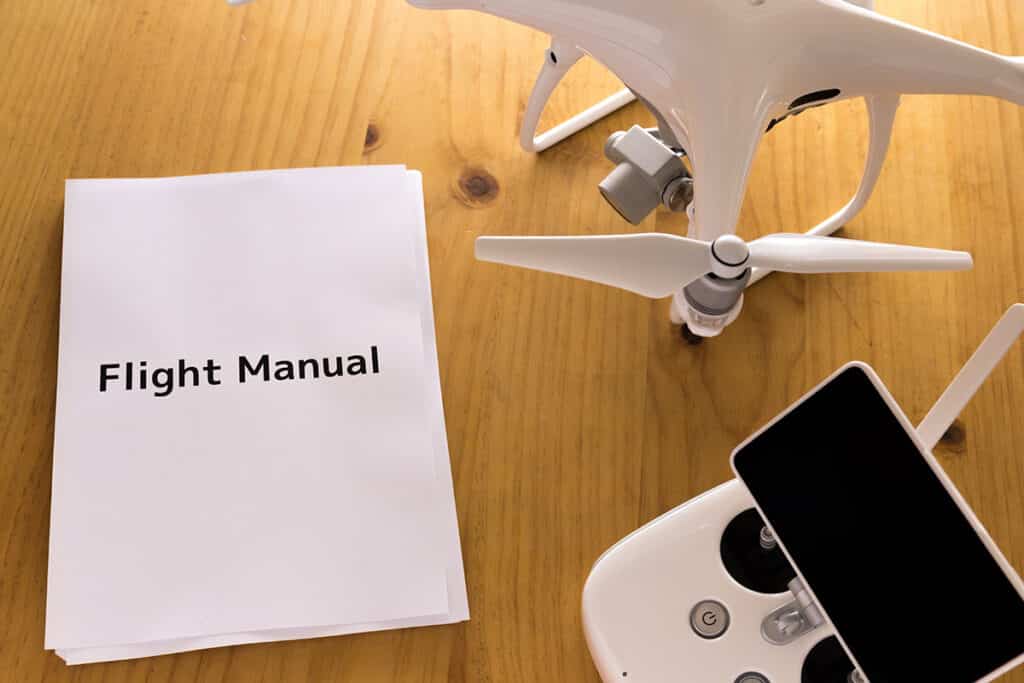What are the Drone-in-a-Box Regulations in the UK?
Lives saved, rapid deliveries, increased productivity, greater sustainability, and a new realm of aerial opportunities; the world has just scratched the surface of potential drone-in-a-box (DIB) solutions.
But first, what is a drone-in-a-box, exactly?
A DIB is a hugely technical and strategically positioned ‘box’ home for a drone.
A drone can take off, fly a mission, and return to its ‘box’, either according to a pre-programed flight path or through manual controls. It allows for autonomous deployment precisely when needed, as well as the ability to undertake a wide range of operations in both populated and remote areas.
DIBs are a fairly new addition to the aerial world, and the regulatory framework remains far from complete. Even so, companies already utilise them in a multitude of ways, all across the globe.
In this article, you’ll discover which industries already utilise DIB options around the world, what to expect from them in future, and expected regulations for drone-in-a-box operations.
Of course, as with all new aviation technologies, regulations surrounding drone-in-a-box solutions may vary from place to place.
As always, make sure to double-check your local laws for guidance. And, if you need a little help, never hesitate to reach out to professionals for any further guidance.
Drone-In-A-Box Solutions Around the World
Though drone-in-a-box solutions remain a relatively new concept, they’re already utilised around the world.
Here are just some of the uses for DIBs, and what they mean for the future.
Emergency Response
In December 2021, Everdrones’ autonomous drone saved a man suffering cardiac arrest, carrying a defibrillator to the scene only 3 minutes after the alarm was raised. The life-saving possibilities with DIBs are endless.
Home Security
Sunflower Labs, based in California, uses drone-in-a-box solutions to enhance home security measures.
Here’s how it works: When a building is broken into, or a threat is otherwise detected, an alarm rings. Then, within seconds, a drone equipped with top-tier sensors arrives to survey the property, identifying the threat and alerting first responders if they need to come to the scene. Because they’re able to respond so quickly, they work as a phenomenal deterrent, as well as a way to capture footage of crimes in progress.
Surveillance and Inspections
Dronehub’s DIBs provide efficient surveillance and inspection solutions to companies across various sectors. The box – designed specifically for remote missions – can handle all weather conditions. It even contains multiple batteries which automatically replace each other within the drone, allowing seamless and continuous operation.
How’s that for impressive?
Deliveries
Wing has already conducted successful, extremely quick drone deliveries across parts of the US. Now, companies like Walmart have announced they’re bringing drone deliveries to US citizens alongside DroneUp’s’ drone-in-a-box solutions.
Agriculture
Already, ‘precision agriculture’ depends on drones to collect better data, improve crop yields, and increase profitability for farmers. Because drones capture so much data so quickly, farmers can respond to irrigation issues, pest damage, and nutrient deficiencies before problems become too great. Now, with drone-in-a-box technology, UAVs provide even greater relief to overstretched farmers.
As you can see, DIB solutions offer near-limitless potential. Offering instant, automated deployment nearly anywhere, they’re redefining drone use cases.
But, what about drone-in-a-box regulations in the UK? Let’s examine what we know, and what we can expect.
Existing Drone-in-a-Box Regulations in the UK
Without a doubt, the positive impact DIB solutions offer the world are undeniable. However, realising the full advantage of drone-in-a-box solutions requires navigating through a complex landscape of roadblocks.
Current schemes, including the Future Flight programme, involving key players in the drone aviation industries, are helping develop effective plans to incorporate advanced drone adoption – including the use of DIBs – in our airspaces over the next few years.
Currently, in the UK, a drone can be deployed from a box. However, due to regulations surrounding BVLOS (Beyond Visual Line Of Sight) operations, an operator must remain present to keep the aircraft within visual line of sight. As a result, this limits potential applications.
Perfecting long-range, optical, detect-and-avoid systems for DIBs is key in maximising their user potential, and preventin in-flight collisions with other aircraft airspace deconfliction.
As you’d expect in the commercial UAV world, drone-in-a-box software needs to be properly vetted and up to date. Additionally, all operators and technicians are required to have permits and comprehensive knowledge of current regulations to smoothly transition a company through DIB flight.
US Paving the Way for Drone-In-A-Box Regulations
Because US DIB laws are further developed than the UK’s, their direction is helping pave the way for what we can expect over here. Although there’s always the chance of slight variations, it’s likely drone-in-a-box regulations in the UK will look pretty similar.
Here’s what we’ve found, and what to expect.
Emergency Landing
Let’s face it. Sometimes, things go wrong, just like any drone flight. Because of this, DIBs must have advanced systems for emergency landing, to ground in safe locations if damaged or unable to continue flight.
Noise Pollution and Wildlife
Noise pollution and other negative impacts associated with drone-in-a-box solutions will be weighed against the positive social impact they provide, in order to assess necessity in certain locations. Advancements in drone technology can help reduce noise output and minimise negative effects, by using smaller propellers and more ergonomic frames.
DIBs effects on local wildlife also remains a key consideration.
First off, some animals can cause outright damage, ruining the structural integrity of the system. However, it’s also important to consider the impact on the wellbeing of wildlife across a DIB’s operating zone. Drone-in-a-box regulations in the UK will likely incorporate these same philosophies.
Drone-in-a-box Regulations in the UK will Likely Consider Weather Impact
Weather will always remain a strong factor within drone-in-a-box regulations (or any drone regulations, for that matter).
Currently, neither the FAA nor CAA have cleared a suitable technology for drones flying in rain or low-visibility conditions. This has huge implications for the current viability of autonomous DIBs and how they can operate globally.
DIBs will require constant meteorological monitoring within fleet operations. This means if hazardous weather is due to pass a DIB zone, a monitoring team will need to actively ground the drone’s flight operations until safe weather resumes.
Drone-in-a-box regulations in the UK may also require systems to have onboard weather monitoring technology to report to flight teams. This remains an important obstacle to overcome before DIBs can conduct BVLOS operations without in-person supervision.
Site Preparation, Site Leases, and Right-Of-Way Usage Rights
With so many uses for DIBs, questions will surely arise over where, exactly, they can fly.
Placement of such systems is crucial, and multiple factors are considered within drone-in-a-box regulations. This includes existing structures, power needs, and airspace. All DIB placements must comply with local building requirements and regulations.
Though many DIBs have a set location, others are far more mobile. These mobile DIBs will need constant consideration of local regulations within the spaces they operate.
DIBs set in permanent locations require ground inspections for structural integrity, and must operate in airspaces which allow drone-in-a-box activity. If operating in multiple airspaces, it’s essential to have a contingency plan to maneuver drones to the ground safely.
Since many DIBs operate in remote areas, it’s critical to ensure appropriate power supply to the DIB to allow continuous work. In some cases, this opens further regulatory requirements for operators seeking access to these locations.
Kitting and Field Installation
Drone-in-a-box solutions come in a wide variety, and will continue to do so (for a wide variety of missions, of course). Therefore, it’s extremely important to ensure your DIB has the correct capabilities for the task at hand.
Take into consideration the operational and environmental factors surrounding it to ensure mechanical functionality and safety of surrounding citizens.
Kitting and installation will require technicians with specialised skills who understand both the regulatory framework in place and necessary missions. Safe operations absolutely depend upon this.
Also, remote DIBs may require cameras on their boxes to monitor new areas.
Why? Because sometimes you need to know of environmental hazards before releasing the drone.
Some boxes may even require robotic arms to aid the release of the drones from the box. It all just depends on which system & location you’re operating.
Maintenance, Security and Repair
All DIBs require regular servicing and preventative maintenance, regardless of which system you choose.
Keeping the box and drone in perfect condition remains the end goal, and requires constant monitoring throughout its operation. To ensure safety, expect drone-in-a-box regulations to require either an internal camera system or human technicians to inspect them.
Drone-in-a-box regulations in the UK might also require frequent replacements and maintenance, due to their continuous work. If you opt for a DIB solution, it’s important to keep technicians and other staff on hand to ensure safe and effective operation.
Though solar panels are a strong option for battery charging, these panels need consistent monitoring and cleaning to keep them working properly. DIBs currently use lithium batteries, which are extremely flammable and dangerous. This is a large reason why spotters are currently required to assist drone-in-a-box operations.
Finally, and sadly, vandalism lingers as a key concern for DIBs. In remote areas especially, you’ll need proper fencing and monitoring methods for security of drone-in-a-box solutions.
What Does This All Mean?
Clearly, a bright, positive future for drone-in-a-box solutions awaits us all. That being said, it’s no small task managing a DIB system, let alone several.
If you’re looking to implement and operate any number of DIBs in your organisation, you’ll need an effective, responsible team of professionals. You’ll need to ensure consistent monitoring, management, and impact of your systems. And, finally, you’ll need to maintain an ongoing understanding of regulatory requirements.
As with any other drone programme, you’ll also need to keep your operations manuals up-to-date with any new requirements.
Although drone-in-a-box programs might appear a little overwhelming at first, they remain completely achievable. Additionally, they open up a new world of benefits and possibilities.
So, are you thinking about incorporating a Drone-in-a-Box programme into your organisation?
First, make sure you do your proper research on the ongoing regulatory framework, and available DIB products. Since many systems offer different options, some are better suited for specific operations than others. After that, build out your operations programme and train your team appropriately.
So, which drone-in-a-box solution is right for you? How do you get started? Should you hire out or bring your drone programme in-house?
If it all sounds like a little too much, there’s no reason to give up or worry – we’re here to help. You don’t have to go it alone.
At Consortiq, we help you find a better way with drones, from consultation and programme implementation to actually doing the work for you.
Ready to learn more? Just complete the form below to schedule a risk-free consultation!

James Perry - Author
James Perry is an aerial content producer and previous interviewer at Flock Cover for the drone video series, Flock Fridays. James has created content for well known international drone and mobility companies, and is particularly interested in modern technologies potential to enhance sustainability and positively impact the way we live.


